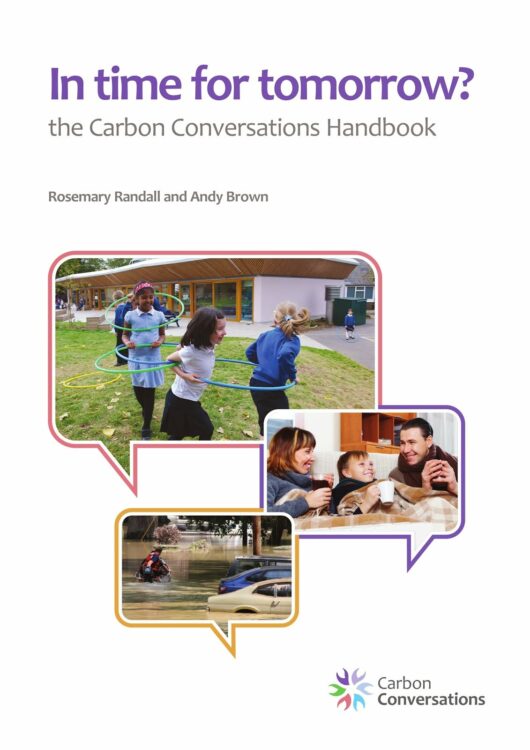In this post I am going to offers some personal thoughts on my experience in the Carbon Conversations initiative.

The Carbon Conversations initiative
The Carbon Conversations initiative has been running since 2006. It was founded by Rosemary Randall, a psychotherapist, and Andy Brown an engineer. They created and developed a psycho-social project that ‘addresses the practicalities of carbon reduction while taking account of the complex emotions and social pressures that make this difficult’.
The initiative has run courses in the UK, Australia, the Netherlands, Canada, Switzerland, France, Finland and Spain (and maybe others), and I recently participated in six meetings over several months in one of these courses in the Netherlands.
As course members we all had a book, a translation of the English version but with locally specific information. A free download of the English version is available here, and it is well worth a look. The book opens with an overview of the current climate situation, the need for change and raises the question of what these propositions mean for the individual reader.
This question is central to the course, and how to deal with the situation as an individual permeates all of the content. The psychology element is easy to see, as the focus is not only on how carbon emissions can be lowered, but also the problems of discussing the subject with your family and how your own emission level makes you feel.
The book addresses these issues by looking at several fields within which an individual can make a difference in their carbon output. The house, travel, food and drink and consumption habits, before the final chapter addresses the problem of talking about the climate with friends and family.
Everyday Life
There is a lot of information on offer regarding the carbon content of various choices that we make every day related to lifestyle. Beyond thinking just about flying and driving, breakdowns are visible of how much carbon is produced in food production, whitegoods and just in maintaining a house, not to mention clothes production and technology use. Blogging is not carbon neutral. Data storage is anything but eco-friendly. Neither is mobile phone use, and this is without thinking about the production of the hardware.
The course involves a lot of game playing, guessing and ordering, which was fun to do. Placing transport possibilities into order of high to low emissions, which imported foods produce the least, and many others, all leads to discussion as well as learning.
From a personal perspective however I feel that the course aim is difficult to understand. During the course various small changes came to light that have some effect on the individual, and could lead to slightly less carbon emission on a personal level, and the final chapter aims to lead the participant into discussion with others over these possible choices, but we are speaking about (and to) the converted here. The change that I can make, as someone who thinks about environmental problems enough to pay for and attend a course is minimal. My actions are not going to change the world.
I ask myself too: If I engage with my friends and colleagues will that change the world?
Difficult Personal Choices
Maybe the course is better seen as a kind of self-help group. We all face the issue of having to travel for work, respect the needs of our children and know that this has an effect on the climate, and to discuss this is without doubt of value. Those who think about the damage they cause themselves to the environment have few outlets to discuss these feelings.
Refusing to buy a mobile phone or computer for your teenage children because of environmental concerns has an effect on their lives, how their friends see them as much as anything else. But buying one might have an effect on the buyer too!
I also question some of the data and rationale in the book. The idea proposed that changing white goods for low consumption versions is seen as an improvement policy, but what happens to the old ones? Where does the waste go? What about the techniques required for building the new machines, mining, steel recycling etc.
What example does this consumerism offer to your children? Surely it would be better to invest in a solar panel system and produce enough electricity to run older appliances. This appears to be the result of focussing on carbon while excluding other environment issues and moral perspectives.
But all of the above demonstrates that the course is valid and useful as a discussion forum, and inevitably, talking about climate change does bring behaviour change.

